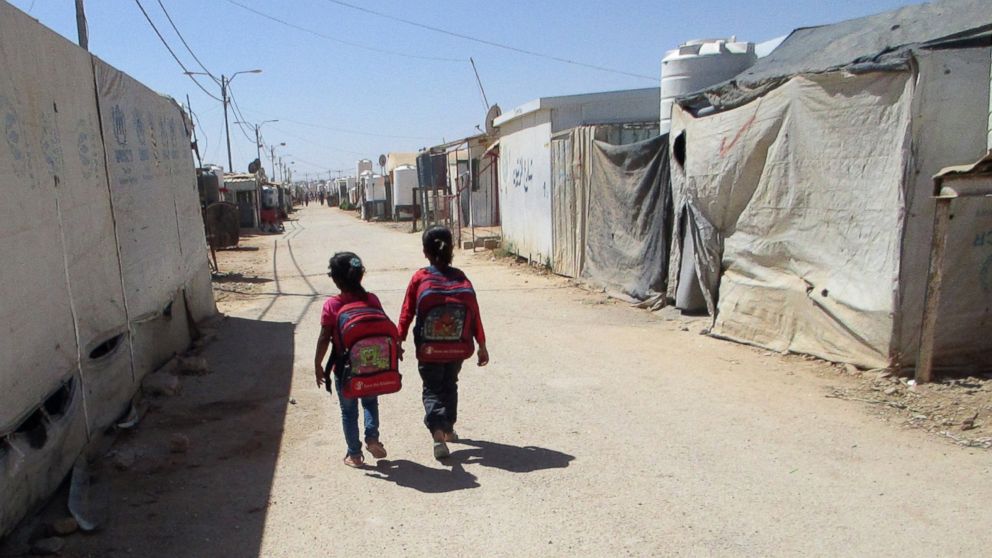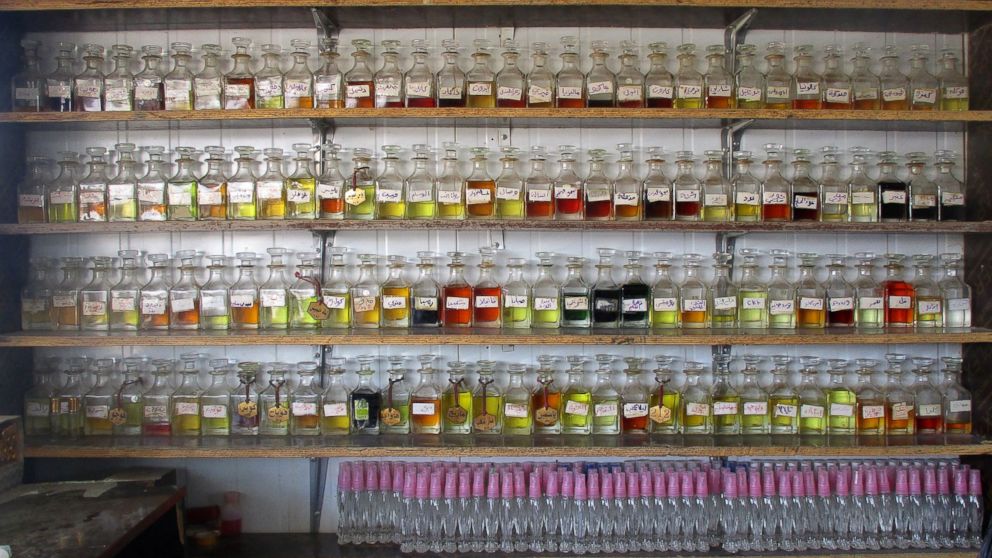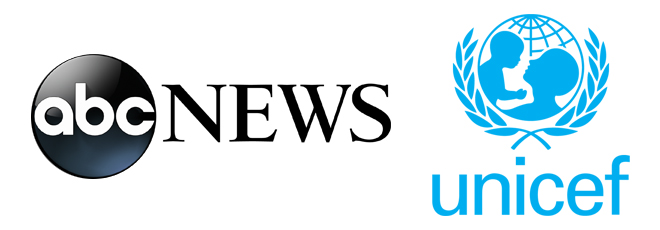This Is Home
Children Document Life in World’s Largest Syrian Refugee Camp
By MORGAN WINSOR
When 16-year-old Mohammad Nour Al-Abdallah pictures his ideal house, he envisions a sprawling villa with a big kitchen, a soccer field, a swimming pool and plenty of toys.
But his reality for the past four years has been a 200-square-foot corrugated-steel caravan in Za’atari, the world’s largest Syrian refugee camp.
“It’s like it’s a dream,” Mohammad told ABC News in Arabic, describing his perfect home. “I was living a different life in Syria.”
In Jordan some 8 miles south of the border with Syria, Za’atari is currently home to about 80,000 refugees, more than half of whom are under the age of 18. ABC News, in conjunction with UNICEF, gave digital cameras to Mohammad and more than 50 other children ages 11 to 18 living in Za’atari and asked them to spend a week documenting daily life there — the joys, the routines and the struggles. These are their stories.
But his reality for the past four years has been a 200-square-foot corrugated-steel caravan in Za’atari, the world’s largest Syrian refugee camp.
“It’s like it’s a dream,” Mohammad told ABC News in Arabic, describing his perfect home. “I was living a different life in Syria.”
In Jordan some 8 miles south of the border with Syria, Za’atari is currently home to about 80,000 refugees, more than half of whom are under the age of 18. ABC News, in conjunction with UNICEF, gave digital cameras to Mohammad and more than 50 other children ages 11 to 18 living in Za’atari and asked them to spend a week documenting daily life there — the joys, the routines and the struggles. These are their stories.
‘It Changed My Life’
Like many of the other Za’atari child refugees ABC News interviewed, Mohammad recalls the exact day he arrived at the camp. It was Oct. 17, 2012, he said. He arrived with his parents, his two sisters and little else. They left behind all their belongings and the rest of their relatives in Syria.
“It was a historic day for me. It changed my life,” Mohammad said. “We thought we were going to stay here for two months and go back.”
Mohammad has since fallen into a daily routine, he said. He wakes up every morning around 6 and walks to the camp bakery to pick up bread for his family. He then plays soccer on one of the practice fields until he has to leave for school at 11:30. After a few hours of classes, he eats lunch at home and participates in planned activities, like photography courses, at one of the camp’s informal learning centers. He then returns home for the night to study and eat dinner with his family.
Over time, Za’atari has evolved into a 3-square-mile, semipermanent settlement in order to meet the needs of the growing Syrian refugee population.
Today, Pradhan said, the camp has more than 13 UNICEF-run schools and 21 community centers, called Makani (My Space in Arabic). The UNICEF initiative provides informal learning, psychosocial support services and life skills training.
“First and foremost, the child has to feel safe and comfortable,” Pradhan said. “We provide the psychosocial support that they need because, as you know, they’ve gone through a lot. They’ve seen a lot of violence and bad things that nobody should see — children or adults.”
Today, Pradhan said, the camp has more than 13 UNICEF-run schools and 21 community centers, called Makani (My Space in Arabic). The UNICEF initiative provides informal learning, psychosocial support services and life skills training.
“First and foremost, the child has to feel safe and comfortable,” Pradhan said. “We provide the psychosocial support that they need because, as you know, they’ve gone through a lot. They’ve seen a lot of violence and bad things that nobody should see — children or adults.”

There’s also a marketplace in the camp, where people have started businesses to sell everything from falafel to perfume, and a small community garden, where residents are cultivating flowers and vegetables in the otherwise desolate landscape.
Each day, UNICEF delivers about 3.5 million liters of water to Za’atari, which residents collect from tanks, and removes 2.35 million liters of wastewater.
“Jordan is already one of the most water-scarce places in the world,” Pradhan said. “Having a camp of this size and providing safe water every day is a big challenge.”
Although there are immense efforts to bring a sense of normality to Za’atari, many children said adjusting to camp life has been very difficult and they often feel bored or alone.
Reem Al-Hariri, 14, told ABC News it took her two months to learn where her family’s caravan is in the sprawling settlement. She said she had to make marks in the dusty streets in order to find her way back. The weather is brutally hot, and the electricity in the camp cuts off at times, which she said makes it tough to study.
Each day, UNICEF delivers about 3.5 million liters of water to Za’atari, which residents collect from tanks, and removes 2.35 million liters of wastewater.
“Jordan is already one of the most water-scarce places in the world,” Pradhan said. “Having a camp of this size and providing safe water every day is a big challenge.”
Adjusting to Life in a Refugee Camp
Although there are immense efforts to bring a sense of normality to Za’atari, many children said adjusting to camp life has been very difficult and they often feel bored or alone.
Reem Al-Hariri, 14, told ABC News it took her two months to learn where her family’s caravan is in the sprawling settlement. She said she had to make marks in the dusty streets in order to find her way back. The weather is brutally hot, and the electricity in the camp cuts off at times, which she said makes it tough to study.
Reem had trouble making friends when she arrived with her family from Dara’a, she said. Her struggles have made her a stronger person, she said, but she still feels lonely at times.
“I have happy days and sad ones,” she said. “Whenever I’m upset, I start to sing.”
Aya Barghash, 16, said she and the other girls in the camp face verbal harassment from some boys when leaving school each day. School is not co-ed in Za’atari; the girls attend classes in the morning, and the boys attend in the afternoon, and the two groups run into each other when one is leaving and the other is arriving. She said she discussed this issue and possible solutions during a United Nations workshop about violence against women that she attended at a Makani center.
“Harassment is creating serious damage for girls, as their parents are preventing them from going to school because of it,” Aya told ABC News. “We need to speak up and not be silenced.”
“I have happy days and sad ones,” she said. “Whenever I’m upset, I start to sing.”
Aya Barghash, 16, said she and the other girls in the camp face verbal harassment from some boys when leaving school each day. School is not co-ed in Za’atari; the girls attend classes in the morning, and the boys attend in the afternoon, and the two groups run into each other when one is leaving and the other is arriving. She said she discussed this issue and possible solutions during a United Nations workshop about violence against women that she attended at a Makani center.
“Harassment is creating serious damage for girls, as their parents are preventing them from going to school because of it,” Aya told ABC News. “We need to speak up and not be silenced.”

Early marriage is another prevalent issue in the camp, and divorce is common, she said.
Statistics from the Jordanian government show that 35 percent of marriages among Syrian refugees involved a minor in 2015, up from 18 percent in 2012. Child marriage among Syrians is not new, but the practice is on the rise as displaced families face the economic pressures and the challenges of providing security for their daughters in exile, according to the United Nations Population Fund.
It’s one of the reasons Aya wants to continue her education and eventually become a psychologist.
“I am always listening to all the details of my friends’ problems. I sometimes cry after hearing them,” she said. “One of my friends got divorced six months ago, and her mother-in-law wouldn’t give her bread. She sometimes would give her old bread and would keep the fresh one for her son and husband. That’s unacceptable."
“I tell myself how my education is my weapon,” she added.
Many families didn’t expect to be living in Za’atari for years. And while some still hope to return to Syria one day, they have tried to transform their caravans into homes. On the inside, families often decorate the ribbed steel walls with fabric or hand-painted designs. And on the outside, some caravans are adorned with murals that make the shelters look like an inviting cottage with painted flowers or a stone castle with growing ivy.
The murals are scattered throughout Za’atari. Some are decorative and thought-provoking, like one that depicts a goldfish jumping out of its bowl. Others are used to mark the streets. Nearly every child who received a camera from ABC News took photos of these murals — bright spots in the otherwise plain camp.
Statistics from the Jordanian government show that 35 percent of marriages among Syrian refugees involved a minor in 2015, up from 18 percent in 2012. Child marriage among Syrians is not new, but the practice is on the rise as displaced families face the economic pressures and the challenges of providing security for their daughters in exile, according to the United Nations Population Fund.
It’s one of the reasons Aya wants to continue her education and eventually become a psychologist.
“I am always listening to all the details of my friends’ problems. I sometimes cry after hearing them,” she said. “One of my friends got divorced six months ago, and her mother-in-law wouldn’t give her bread. She sometimes would give her old bread and would keep the fresh one for her son and husband. That’s unacceptable."
“I tell myself how my education is my weapon,” she added.
‘Trying to Make It Normal’
Many families didn’t expect to be living in Za’atari for years. And while some still hope to return to Syria one day, they have tried to transform their caravans into homes. On the inside, families often decorate the ribbed steel walls with fabric or hand-painted designs. And on the outside, some caravans are adorned with murals that make the shelters look like an inviting cottage with painted flowers or a stone castle with growing ivy.
The murals are scattered throughout Za’atari. Some are decorative and thought-provoking, like one that depicts a goldfish jumping out of its bowl. Others are used to mark the streets. Nearly every child who received a camera from ABC News took photos of these murals — bright spots in the otherwise plain camp.

Before war broke out in Syria, Bayan and her family lived comfortably in a house in Dara’a. Her father worked as a mason, and her mother was a housewife. Their family would often take trips to Damascus and to the coastal city of Latakia, where they would rent a chalet in the summer.
In Za’atari, her parents have opened up a perfume shop in the camp’s marketplace to make ends meet. Bayan said she helps out at the shop after school.
While she is thankful to have escaped war-torn Syria, she wishes she could be reunited with the rest of her family, and she deeply misses the country she knew as “paradise.”
“I think about how we left our country, why we left and when we’ll go back,” she said. “Syria is the paradise of the earth.”
Executive Producer DAN SILVER
Managing Editor XANA O'NEILL
Managing Editor, International News JON WILLIAMS
Photo Director PHAEDRA SINGELIS
Supervising Producer RONNIE POLIDORO
Senior Editor MATT WILLIAMS
Deputy Photo Director JEFF COSTELLO
Assignment Manager KIRIT RADIA
Reporters MORGAN WINSOR, ARMANDO GARCÍA
Producers RYM MOMTAZ, JEESOO PARK
Video Editor BEN SCHELLPFEFFER
News Editor TARA FOWLER
Copy Editor JOSE FIDELINO
Creative Director HAL ARONOW-THEIL
Art Director ANDREW VANWICKLER
Senior Animator LISA FISHER
Senior Designer SUZANNE DACUNTO
Senior Developer GREG ATRIA
Translators LENA MASRI, QOSSAY ALSATTARI
Additional Photo Credits
Satellite images of Za’atari refugee camp in Jordan from 2011-2016: DigitalGlobe
Children carrying water in Za'atari refugee camp in Jordan: Alaa Al Khatib/UNICEF
Children walking in Za'atari refugee camp in Jordan: Aya Barghash/UNICEF
Perfume shop in Za'atari refugee camp in Jordan: Bayan Masri/UNICEF

In Za’atari, her parents have opened up a perfume shop in the camp’s marketplace to make ends meet. Bayan said she helps out at the shop after school.
While she is thankful to have escaped war-torn Syria, she wishes she could be reunited with the rest of her family, and she deeply misses the country she knew as “paradise.”
“I think about how we left our country, why we left and when we’ll go back,” she said. “Syria is the paradise of the earth.”
Credits
Executive Producer DAN SILVER
Managing Editor XANA O'NEILL
Managing Editor, International News JON WILLIAMS
Photo Director PHAEDRA SINGELIS
Supervising Producer RONNIE POLIDORO
Senior Editor MATT WILLIAMS
Deputy Photo Director JEFF COSTELLO
Assignment Manager KIRIT RADIA
Reporters MORGAN WINSOR, ARMANDO GARCÍA
Producers RYM MOMTAZ, JEESOO PARK
Video Editor BEN SCHELLPFEFFER
News Editor TARA FOWLER
Copy Editor JOSE FIDELINO
Creative Director HAL ARONOW-THEIL
Art Director ANDREW VANWICKLER
Senior Animator LISA FISHER
Senior Designer SUZANNE DACUNTO
Senior Developer GREG ATRIA
Translators LENA MASRI, QOSSAY ALSATTARI
Additional Photo Credits
Satellite images of Za’atari refugee camp in Jordan from 2011-2016: DigitalGlobe
Children carrying water in Za'atari refugee camp in Jordan: Alaa Al Khatib/UNICEF
Children walking in Za'atari refugee camp in Jordan: Aya Barghash/UNICEF
Perfume shop in Za'atari refugee camp in Jordan: Bayan Masri/UNICEF
